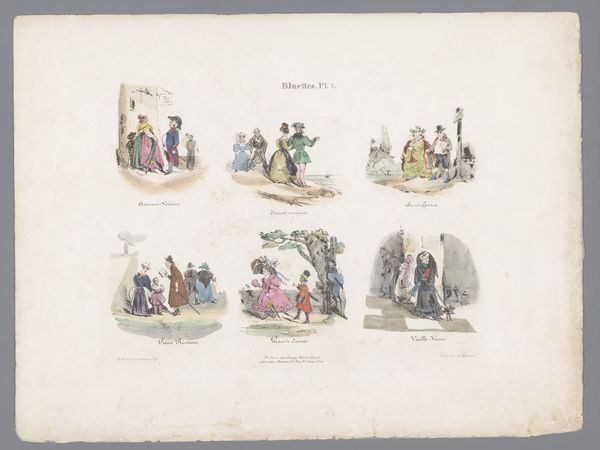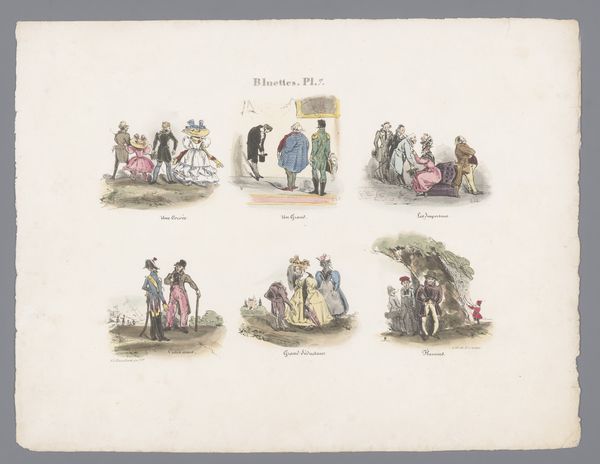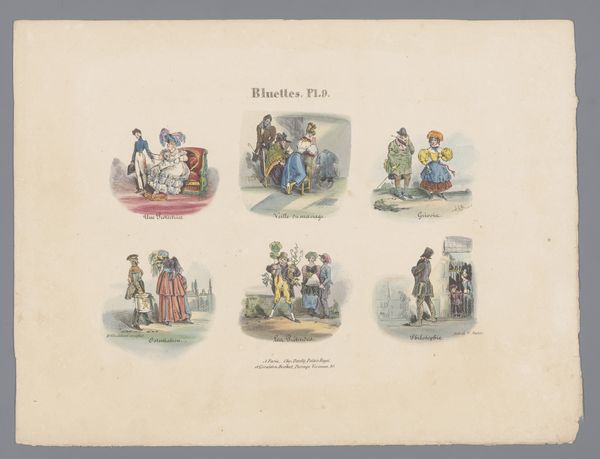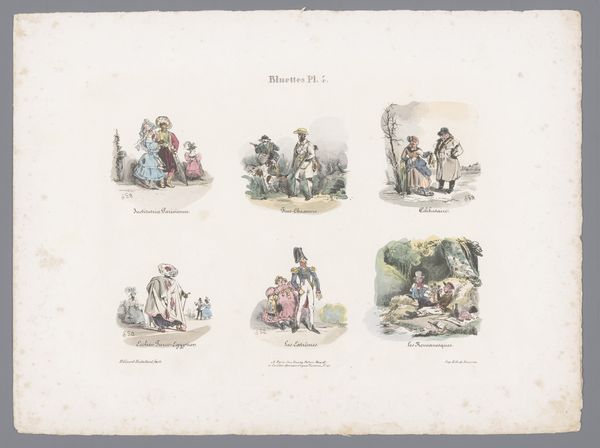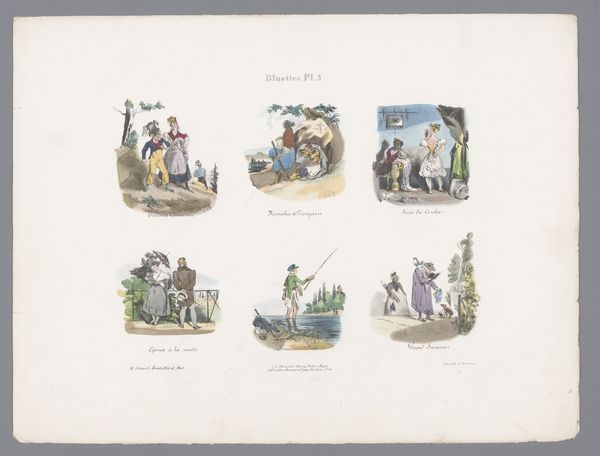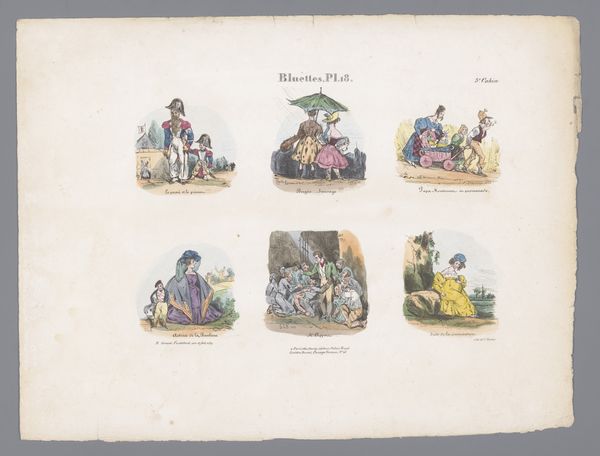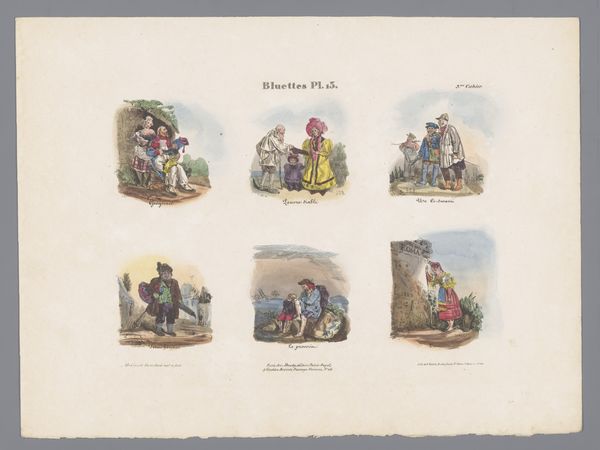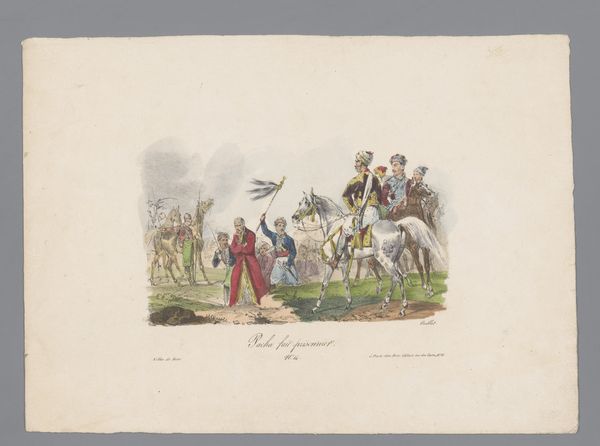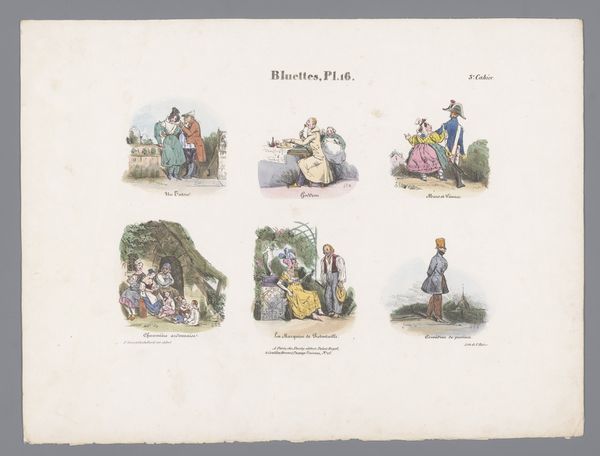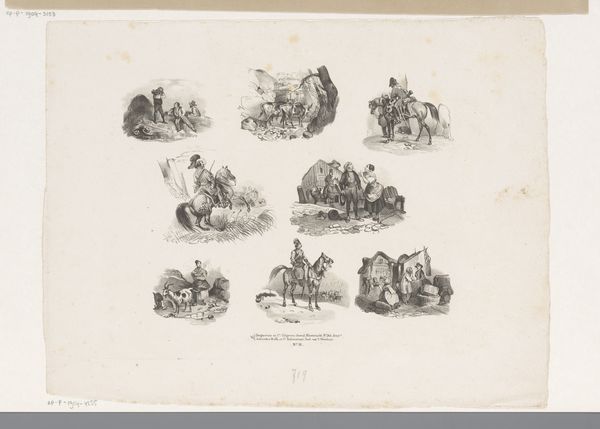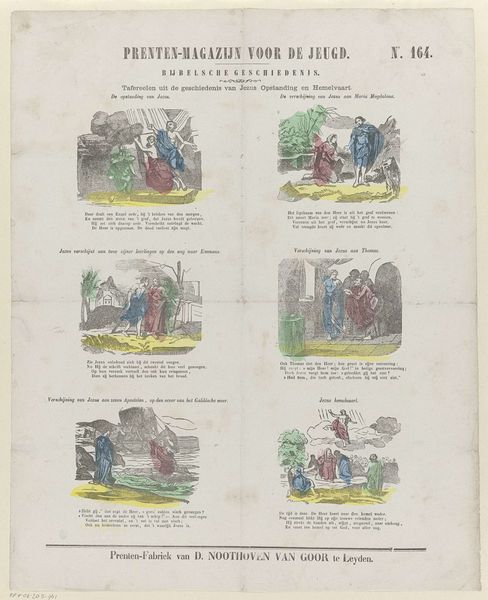
watercolor
#
water colours
#
figuration
#
watercolor
#
coloured pencil
#
romanticism
#
genre-painting
Dimensions: height 271 mm, width 363 mm
Copyright: Rijks Museum: Open Domain
Curator: Looking at this artwork by Henri-Gérard Fontallard, made in 1828, we see "Six Scenes with Various People," rendered delicately with watercolor and coloured pencil. What are your initial thoughts? Editor: My first impression is one of distance. Each vignette is carefully separated, yet they seem to collectively whisper tales of everyday interactions with subtle mockery. There is something both lighthearted and cynical here. Curator: Yes, there is an ironic tension. This illustrates Romanticism’s subtle critique of social structures. Fontallard uses symbols that viewers of his time likely immediately understood. Note, for instance, the staged theatrical scene in the lower right corner—the use of archetypes suggests the theater of societal roles. Editor: And those roles are steeped in power dynamics. Consider the scenes depicting children: there is instruction, possibly even chastisement, which would reflect societal control beginning at a young age. I think there's a running thread here: how individual agency is constructed, negotiated, and potentially stifled within various social settings. Curator: The artist captures those societal negotiations elegantly. Fontallard understands the subtle but effective iconography of class and social expectation in 19th-century society. Observe the contrast in attire, postures, the settings where those conversations and moments take place. It creates its own, unique symbolic vocabulary. Editor: And not just class; consider the roles afforded to different genders. The active, male figures versus the more passive female figures— the seaside, the game among children and adults alike all highlight, in their own right, different sides of the inequalities ingrained within French society at this time. I would love to delve deeper into that theatrical tableau though: The figures almost become symbols rather than living people at that point! Curator: Yes, and each symbol seems perfectly positioned in these almost detached settings which serve, in this arrangement, as commentaries rather than depictions of places or settings. This detachment encourages active reflection. This allows for a certain visual coding of each social role being demonstrated in watercolor on this sheet. Editor: Absolutely. Fontallard doesn't just document society; he actively scrutinizes it through a visual vocabulary readily available at the time. A fantastic blend of artistry and pointed social critique. Curator: An intriguing dialogue of artistic technique and societal reflection, precisely what Fontallard wanted us to recognize, using accessible cultural symbolism. Editor: I concur; it certainly adds nuanced layers of understanding.
Comments
No comments
Be the first to comment and join the conversation on the ultimate creative platform.

